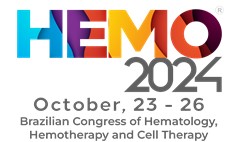
XVI Eurasian Hematology Oncology Congress
More infoTreating Diffuse Large B-Cell Lymphoma (DLBCL) in elderly patients is challenging. There is limited data available from Low- and Middle-Income Countries (LMICs) on elderly DLBCL. We analyzed the presentations and survival outcomes of patients with DLBCL according to their socioeconomic status.
MethodologyThis was a multicenter retrospective study conducted from 2015 to 2023. We included 176 patients aged 60 years or older. The variables examined were age, gender, subtype, resource environment and treatment received. Kaplan-Meier curve was created for the entire patient cohort; t-test was utilized to compare means, Disease-Free Survival (DFS) and Overall Survival (OS), with a significance level of p < 0.05. Analysis was performed using SPSS version 29.
ResultsThe median age was 66 years (range: 60–89 years). Ninety-three (57%) patients were treated in limited resource settings, while 43% had enhanced resources. ECOG performance scores between 2 and 3 were present in 71%. Median IPI score was 3. RCHOP regimen was administered to 51% (n = 81) patients, and CHOP regimen to 20% (n = 32) patients. In 21% (n = 38) salvage treatment was given due to relapsed/refractory disease. None of the patients in this group received consolidation with autologous stem cell transplant. The entire cohort’s OS was 12-months, while DFS was 8-months. OS (33.9% vs. 8.2%; p = 0.00) and DFS (29% vs. 5.9%; p = 0.00) were better in patients with enhanced resources. The median DFS of patients treated in enhanced settings was 1.3-years versus 0.4-years in limited resource settings (p < 0.0001)
ConclusionSurvival rates were lower for patients receiving treatment in resource-limited settings. Outcomes can be improved with early referral and inclusion of Rituximab. Enhanced geriatric assessments along with better supportive care is essential.






